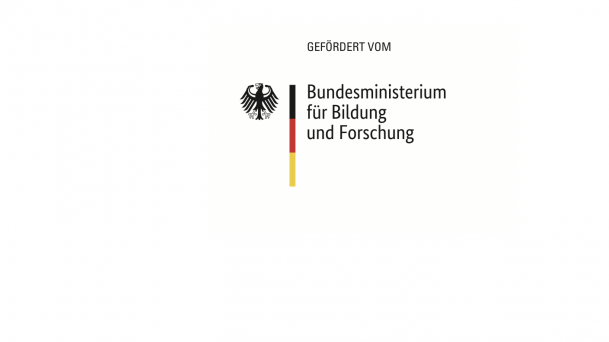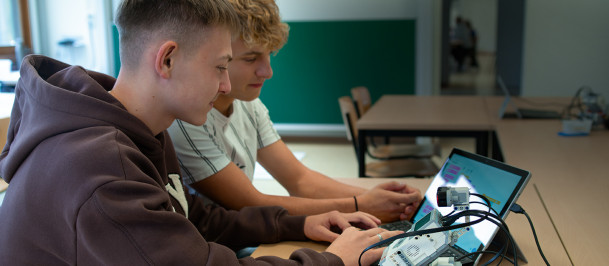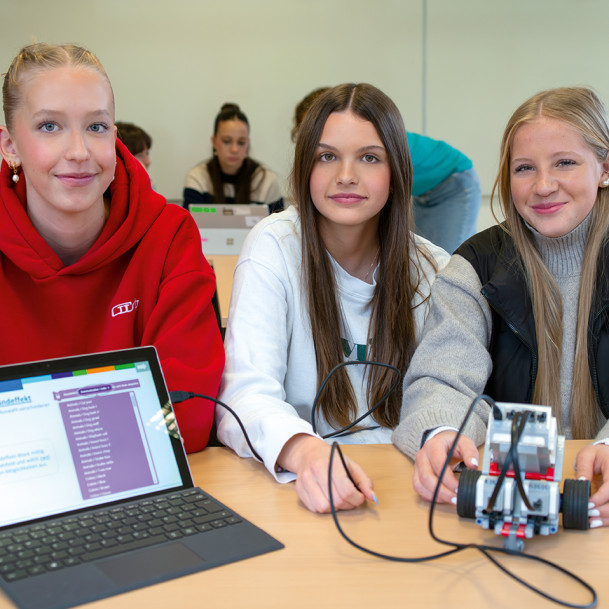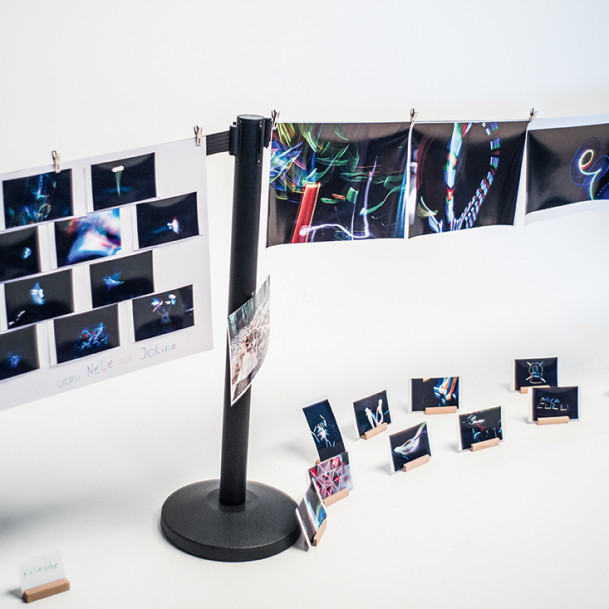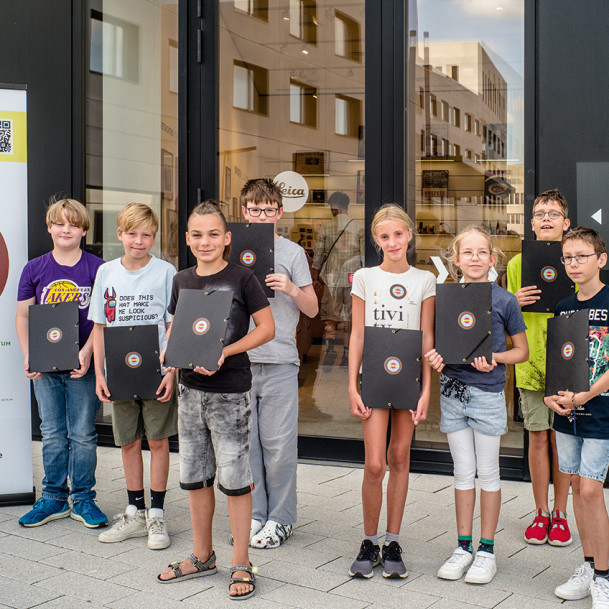More MINT
The various MINT (STEM) activities in the region are pooled and cooperatively developed further under the umbrella of the MINT CLUSTER WETZLAR. The first funded projects and concrete plans for the new Science Center Wetzlar have already been launched.
The MINT CLUSTER WETZLAR is working flat out on interconnecting and subsequently developing STEM activities in the region. It is already possible to view them on the website, experience them in inspiring workshops and imagine them in the designs for the new Science Center Wetzlar.
At this point, we warmly recommend that people who really want to get an idea why the MINT CLUSTER WETZLAR (MCW) exists and what it is about see for themselves live and in color. Such as the MCW’s new format MINT + ART which took place for the first time during the last week of the summer holidays. Over five days, participants were given the opportunity to create their own light and sound artworks. Guided by pertinent experts, the children and young people aged between 10 and 14 were highly motivated and inspired. The photographic studio of Leitz Park allowed them to work like professionals. They went hunting for photographs and sounds in and around Leitz Park, experimenting with optical effects on crystals, mirrors, or soap bubbles and creating sounds, tone colors, or even whole soundtracks on digital and analogous instruments. During the closing event, the children and teenagers even got to present their own light and sound artworks. In addition to that, they received a certificate which will certainly help them when applying for an internship in the future.
Sounds good? Absolutely. And only 15 kilometers away in direct line, Justus Liebig University (JLU) Gießen offers some similarly fascinating programs. Of course, live and in color, too. In the students laboratory “Physics in Action” (PiA), pupils experiment for example with EV3 Lego robots. They teach the robots to see, to sense and to move. In robotics, the “sensory organs” required to do so are made of sensors. They enable the robot to detect obstacles and to change the direction of its movement. The young people decide what signals and impulses their robot is to react to. Which has to be programmed accordingly. Will the robot manage to drive through a labyrinth on three wheels without external help? Failure is not ruled out. But as so often, it also holds true here: The journey is the destination.
Various STEM projects and programs for young people
Art and technology do not go together? Robotics is only for boys? “That’s absolute nonsense!” says Prof. Dr. Claudia von Aufschnaiter of the Institute for Didactics in Physics at the Justus Liebig University Giessen. She leaves no doubt that she has a low opinion of such stereotypical thinking. “Our objective is to approach young people in different ways to unlock their individual potential for STEM. The projects and programs we offer are adequately varied to that effect.” The JLU Giessen is one of MCW’s network partners. The joint goal of the initiative is to get young people interested in the STEM – or MINT – subjects mathematics, informatics, natural sciences, and technology. All parties involved in the network agree that there are just various and different ways to reach the goal. “Nevertheless, we may considerably increase the efficiency and the possible gain of the programs,” emphasizes Prof. Dr. Peter Klar of the 1st Physical Institute at the JLU: “Under the umbrella of the MCW, we have the opportunity to bring together expert skills and knowledge from various fields and to create a network in which all actors and their activities get seen.”
What this may exactly look like is already discernible on the freshly reinstalled Internet presence of MINT CLUSTER WETZLAR where the STEM activities of the various actors are on view: the Viseum Wetzlar with their workshops for school classes and the cultural program JUNIOR as well as the students laboratory PiA which covers a whole bunch of physical subject areas besides robotics; the children and youth education program of the city of Wetzlar is represented in the same way as the AKTION FEINOPTIK! (a precision optics campaign). During the NaWitech festival of natural sciences and technology at the Werner von Siemens school in Wetzlar, project assistant Reinhold Herrmann offered join-in activities on the subject of “Looking and Lathing” (optics and mechanics) with a self-built exhibit. At the trainee recruiting trade show of the IHK Lahn-Dill, he served as a fair guide giving valuable orientation advice to pupils.
Fostering the interest in STEM towards career or study orientation
The catch-word “orientation” is key in bridging the gap from school to profession or studying. Because the options for training and studying have drastically diversified in the last couple of years and are subject to constant change. “In order to give advice and support to young people, however, a long-term concept is lacking which would coordinate age-appropriate activities for arousing and fostering the interest in STEM towards career or study orientation and keeping it up well into occupation,” says Peter Klar. This is exactly what the JLU wants to establish in cooperation with the Science Center Wetzlar at the JLU with their project BeST-MINT where innovative ways of linking education and training are developed and put to the test in collaboration and coordination with the Science Centers of the region as well as with other regional actors in STEM education.
Apart from interconnecting various actors, the focus of the MCW’s activities is currently on the conception of the new Science Center Wetzlar at Domhöfe which will be an important point of contact in the days to come. “One of our key tasks will be to conceptualize the exhibition and exhibits in the new Science Center in such a way that they are fun and ‘trigger’ the interest for STEM in young people while opening up concrete perspectives for jobs and study programs,” says Claudia von Aufschnaiter. This sounds feasible but will be most challenging not only in didactic aspects. For this “rule of three” contains a couple of variables that have to be integrated in the equation by all means: How may the interest of young people be piqued, sustained or even fueled further? How may age-appropriate distinctions be made on the exhibits? How may the exhibits be integrated in the curricula of the schools? How do you make the connection to vocational and study course orientation? And not least: How may the collaboration with partner organizations be realized in technical aspects?
Companies are involved in the MCW and the Science Center Wetzlar
Peter Klar is certain: “The Science Center Wetzlar won’t be a museum but a space of activities where interactive exhibits will be linked to a digital living and working environment.” This digital background provides young people with access to scientific and technological knowledge which will be imparted in a way that is both appropriate to their age and guided by their interests. “In addition to that, it will interrelate the exhibit with the associated educational paths and occupational fields in STEM as well as with the corresponding companies as prospective employers in the region.”
In 2025, the Science Center will open its gates in the new Domhöfe. Until then, the MINT CLUSTER WETZLAR is doing valuable groundwork. “In particular the companies and institutions of the region which are involved in the MCW and the Science Center Wetzlar play a crucial part in the successful outcome,” emphasizes Ralf Niggemann, Manager of Wetzlar Network and Chairman of the VISEUM Wetzlar. “If we succeed in this way in satisfying the increasing need for STEM professions in our unique industrial region, we have done everything right.”
Additional Information:
Contact:
Ralf Niggemann
Manager Wetzlar Network
Chairman of Viseum Wetzlar e. V.
info@mintclusterwetzlar.de
